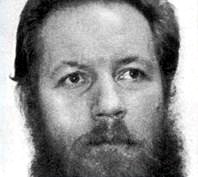
(5-16-19) The blog I posted on Mother’s Day announcing Thomas Silverstein’s death in Colorado from heart complications, sparked a flurry of personal emails from retired and current federal Bureau of Prison employees whose opinions I respect.
Many of whom I had interviewed in 1987-89 when I was doing research inside the U.S. Penitentiary in Leavenworth for my book, The Hot House: Life Inside Leavenworth Prison.
Several complained that I had written an overly sympathetic and incomplete portrait of Silverstein who had spent 36 years in isolation, believed to be the longest of any federal prisoner. They argued that I failed to document how dangerous he was and why isolationing him was necessary.
In retrospect, I agree there were incidents in Silverstein’s life that I should have posted to be fair. I omitted them, not because of any ill intent, but because I was focusing in my blog about his three decades and more of isolation and our 32 years of correspondence about his life behind bars.
While the murder of Correctional Officer Merle Clutts was the impetus for putting Silverstein under “no human contact” status, I failed to explain that he had already been convicted of brutally murdering three fellow prisoners, although his first conviction was later overturned.
An official involved in isolating Silverstein said the BOP couldn’t risk releasing him into the general prison population or even into solitary confinement in a special housing unit where other prisoners were kept because of his demonstrated history of killing.
In my book, I described each of these murders in grisly detail but I failed to recite them in my initial blog. Rather I simply linked Silverstein’s name to Wikipedia.
For the record, he was convicted of murdering inmate Danny Atwell, who reportedly refused to serve as a mule for heroin being moved through the prison. That conviction was overturned in 1985 after it was found that the jailhouse informants who testified at his trial had perjured themselves on the stand.
By the time his conviction was overturned, Silverstein had been sent to the penitentiary in Marion where he participated in the murder of Robert Chappelle, a member of the D.C. Blacks prison gang, and Raymond “Cadillac” Smith, the national leader of the D.C. Blacks prison gang.
Silverstein insisted he was innocent of the first killing but acknowledged that he committed the subsequent murders. He argued self-defense, insisting that both had tried to kill him in retaliation for Atwell’s murder.
Regardless, he had committed multiple murders before killing Officer Clutts.
I also was reminded that while Silverstein consistently denied being a member of the Aryan Brotherhood, other members of that gang had told me during interviews when I was writing my book that he was a member – information confirmed by the BOP investigators. I should have added that rebuttal.
I also quoted Silverstein in my blog stating that he murdered Officer Clutts because, he insisted, Clutts was “torturing” him. This was always his position. At the time, the BOP said it found no credible evidence that Clutts had mistreated Silverstein. A footnote, I have always condemned Clutts’ murder.
Finally, I should have mentioned in my remembrance what journalist Alan Prendergast, noted in his obituary about Silverstein for Westword publications.
Despite his quarter-century of good behavior and evaluations by prison psychiatrists that indicated he was a low risk for further violence, Silverstein was unsuccessful in his efforts to challenge his epic isolation in court. In 2011 a federal judge ruled that the conditions of his confinement weren’t “atypically extreme,” and in 2014 the Tenth Circuit Court of Appeals agreed, declaring that thirty years of solitary didn’t amount to cruel and unusual punishment.
Silverstein was and remains a lightning rod figure. No one questions that he was a criminal nor that he did horrific things. Despite this, he has family who cared for him – just as the people whom he murdered have families.
Those who emailed me – associated with the BOP – felt strongly that its leaders took steps that were necessary, fair and completely justified because of Silverstein’s criminal conduct despite how harsh those conditions might have seemed to those of us outside the walls.



